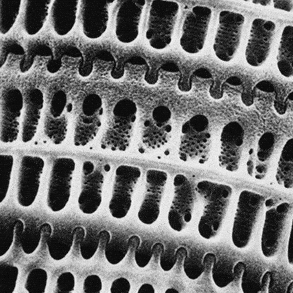Article contents
From DNA to genetically evolved technology
Published online by Cambridge University Press: 07 June 2013
Abstract

Watson and Crick’s discovery of the structure of DNA in 1953 and the near-simultaneous advent of the first silicon transistor in 1954 spurred parallel historic advances over the following decades in molecular biology and materials technology. As these two expansive fields of research have progressed, important areas of overlap have included the extensive use of materials innovations in biological research, such as in microscopy and measurement systems, while materials research has benefited from efforts to mimic design principles utilized in nature. Until relatively recently, however, the molecular mechanisms that underpin nature’s biological orchestra have remained largely outside the purview of materials research. Now, with new abilities to harness and modify biomolecular and cellular systems, evidence is mounting that biology can be fruitfully utilized to directly engineer technological materials. This article aims to highlight the importance of DNA-driven routes to new materials while providing a brief overview of the genetic engineering platforms that make these routes possible. Emphasis is placed on the fact that it is now possible to genetically evolve materials technologies in a manner that mimics the genetic evolution of biominerals in nature.
Keywords
- Type
- Technical Feature
- Information
- MRS Bulletin , Volume 38 , Issue 6: Metal hydrides for clean energy applications , June 2013 , pp. 509 - 518
- Copyright
- Copyright © Materials Research Society 2013
References
- 5
- Cited by


